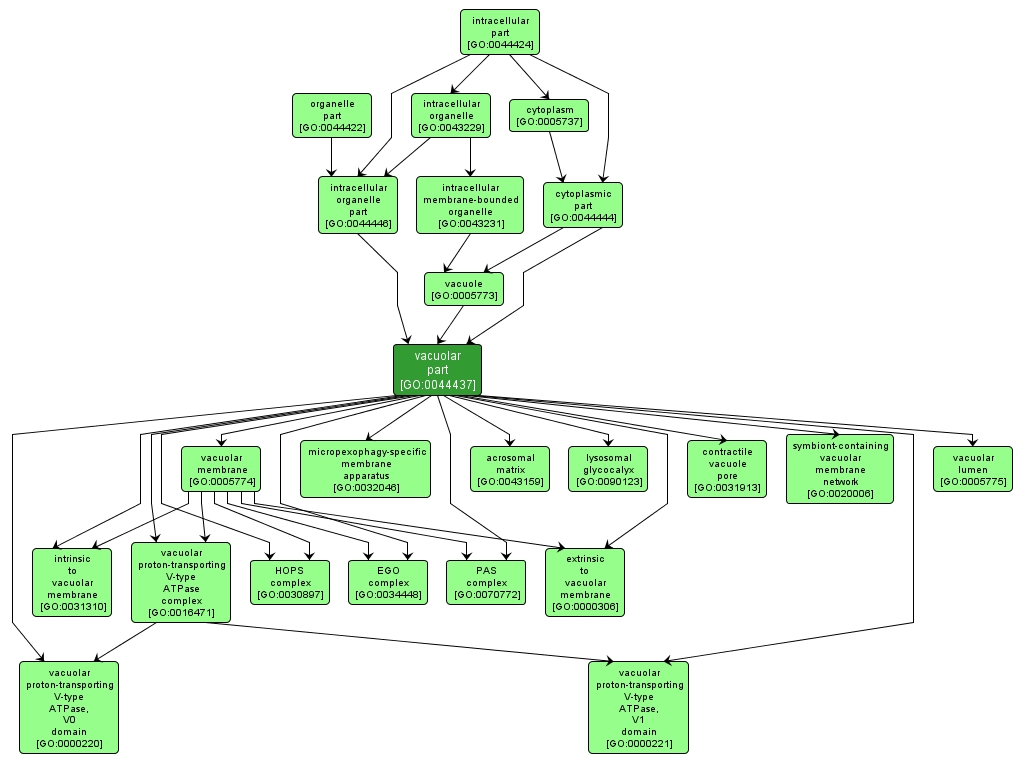GO TERM SUMMARY
|
| Name: |
vacuolar part |
| Acc: |
GO:0044437 |
| Aspect: |
Cellular Component |
| Desc: |
Any constituent part of a vacuole, a closed structure, found only in eukaryotic cells, that is completely surrounded by unit membrane and contains liquid material. |
| Synonyms:
|
|

|
INTERACTIVE GO GRAPH
|














